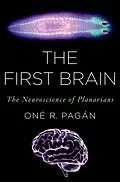Planarians, a class of flatworm, are extraordinary: they possess the remarkable ability to regenerate lost body parts, including complete regeneration of the nervous system. If cut into pieces, each piece of the planarian can regenerate into a complete organism. They are also unique among invertebrates in that they display addiction-like behaviors to many drugs abused by humans. Because of these distinct neurological traits, the planarian is often used as an animal model in neurological research, being used most recently for developments in neuropharmacology. The First Brain is a discussion of how planarians have been used in neuropharmacology, and what role they have played in scientific developments that have a high impact on our culture. Planarians have been the animal models for research in drug addiction, antidepressant development, and various other topics in biology, neurobiology, and even zoology. Pagán uses these flatworms as a framework to explore the history of biological research. The book provides accessible background information on how biomedical research is impacted by evolution, and defines neurobiology and neuropharmacology in ways that are easy to understand. At the same time, Pagán provides enough detail for the book to useful for scientists working in various subsections of biology. The planarian has played a key role in the history biological, neuropharmacological, and zoological research, and has even made appearances in a few unexpected places in popular culture. Oné Pagán explores all these roles, and shows us why the planarian truly is one of the most extraordinary and influential organisms in scientific research today.
Autorentext
Oné Pagán is Professor of Biology at West Chester University of Pennsylvania.
Inhalt
TABLE OF CONTENTS INTRODUCTION PART I - FUNDAMENTALS Chapter 1. Science Science does not exist Reductionism, its advantages and limits On theories and Theories Evolution and Life Chapter 2. Biomedical Research Biochemistry and cell biology lite How we classify life Animal models and biomedical research Basic or fundamental research? PART II - THE SCIENCE OF THE BRAIN Chapter 3. An introduction to neuroscience Neuroscience or neurobiology? Neurons The Spaniard and the Italian Excitable cells and electrophysiology Synapses and chemical neurotransmission Is a nervous system absolutely necessary for survival? Plant Neurobiology Chapter 4. The human brain What exactly is a brain? The human brain and nervous system A brief history of what people thought of their brains The complexity of the human brain / On really BIG numbers Chapter 5. Some brief thoughts on pharmacology What is pharmacology? Psychopharmacology, plant style Animal models in pharmacology PART III - PLANARIANS Chapter 6. Planarians What is a flatworm? Flatworm evolution and fossil records What is a planarian? Early works on planarians (1700-1800s) Planariologists: Three "personal" connections Chapter 7. Planarians in modern biology Genetics First they liked planarians then they didn't Sages of regeneration Of planarians and genomes Chapter 8. Planarians in the popular culture: The arts, science fiction, fantasy and humor Planarians in the popular culture Planaria: Poem by Dr. Lance Larsen Planarian man Planaria and the new Battlestar Galactica Fringe Twilight The Big Bang Theory Dr. Who Planarian humor PART IV - THE FIRST BRAIN Chapter 9. The first brain Early, really early nervous systems The first hunters The first brain Why are planarians an excellent animal model in neuroscience? Very brief comments on protopsychology Chapter 10. From corals and plants to planarians and rats Planarians in pharmacology: nicotine and cocaine The beginnings of systematic planarian pharmacology research The Temple University team The joy of discovery From corals and plants to planarians and rats Planarian research translated to vertebrates: What does it mean, and what it doesn't What can the planarian brain teach us about our own? EPILOGUE REFERENCES - BOOKS REFERENCES - ARTICLES
